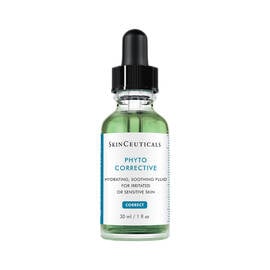DERMAL FILLERS
INJECTABLE TREATMENTS TO RESTORE FACIAL VOLUME AND FULLNESS

Performed by a skincare professional, dermal fillers are one of the most widely used treatments when it comes to restoring smoothness and facial volume. When injected, they fill in space and absorb water to create a smoother, fuller appearance in the face or to enhance the contours of the face. Dermal fillers are most commonly used to fill nasolabial folds, cheeks, and lips.
FAQS
WHAT ARE DERMAL FILLERS?
A common complaint of aging skin is the general loss of volume in the face and less “bouncy” skin. As we age, our supplies of collagen and elastin decline and the fibers themselves become weaker and less springy. The surrounding fluids that cushion and support these fibers also decrease and begin to “dry up.” This combination of factors results in wrinkles, ridges, and a general loss of volume in the skin. While a neurotoxin such as Botox® will help smooth out wrinkles caused by muscle movement, only a dermal injectable can address the depressions and loss of volume associated with aging.
Dermal fillers come in various formulations, each of which works differently in softening the lines, folds, creases and loss of volume associated with age and/or exposure to environmental aggressors. Dermal fillers work to fill in these depressions. More recently, fillers have also been used to augment contours of the face. The most popular fillers are hyaluronic acid based (Juvéderm® and Restylane®). More permanent fillers such as Sculptra® and Radiesse® are long-lasting through their collagen stimulating properties.
Your skincare professional will work with you to determine whether dermal fillers are right for you and to develop a pre and post-treatment regimen to help protect and maintain results.
WHO ARE DERMAL FILLERS FOR?
Fillers are appropriate for any skin type and address a multitude of age-related concerns. They can eliminate the depressions caused by deep creases, wrinkles, or scars. Fillers can also be used in larger areas such as the cheeks.
Although the words “dermal fillers” generally conjure up images of skin in advanced stages of aging, fillers are now popular for augmentation and contouring. More recently, researchers have discovered that injectables also stimulate fibroblasts to synthesize additional collagen.1 Physicians are now seeing more patients using fillers as a preventative treatment to slow aging, or enhance particular areas such as the lips.
Fillers should only be used by adults, as they can inhibit bone structure if not fully developed at time of injection. Fillers are not currently recommended to be used by pregnant or nursing women. Always consult with your skincare professional to assess whether dermal fillers are right for you and to understand the best advanced homecare regimen to help protect and maintain results.
https://www.ncbi.nlm.nih.gov/pubmed/24962508
HOW DO DERMAL FILLERS WORK?
A healthcare provider injects a gel-like substance into the skin at the approved depth for the filler. The filler substance fills up the area, resulting in improvements such as smoother nasolabial lines or fuller cheekbones.
The most popular fillers are derived from hyaluronic acid, a water-binding sugar that is already produced in the skin. Other fillers are composed of synthetically derived substances, such as calcium-based microspheres.
Your skincare professional will determine which dermal fillers are right for you and develop a pre and post-treatment regimen to help protect and maintain results.
WHAT WILL I EXPERIENCE WHEN RECEIVING DERMAL FILLERS?
Although the discomfort associated with receiving dermal fillers is minimal, it is not entirely pain free. The majority of the fillers on the market have lidocaine in them for pain control. A series of injections are administered into the target areas, certain areas may be more sensitive during injection. For example, lip fillers may cause more discomfort to the patient than cheek fillers.
Some soreness, bruising, and swelling may occur in the days, or even weeks, following the procedure. Many factors affect the severity of these side effects, such as the speed of the injections and the site of injection. Another factor is the material used for the filler. Fillers that provide semi-permanent results, as often seen in cheekbone fillers, are associated with more swelling and discomfort.
Due to the potential side effects associated with dermal fillers, it is important that they are performed by a licensed skincare professional. Your skincare professional may also recommend a post-procedure regimen to maintain and protect results.
WHEN SHOULD I GET DERMAL FILLERS?
A single session of an injectable has the potential to last up to two years, depending on which kind of filler is used. The least permanent options, those composed of hyaluronic acid have the potential for rather quick absorption within 6 months. This especially holds true if the filler is placed in a region with a lot of movement.
Facial fillers do not increase the sun sensitivity of the sun, making them a great year-round option. However, until the initial swelling has subsided, patients should avoid excessive heat exposure, including prolonged sun exposure. Your skincare professional may also recommend a post-treatment skincare regimen to help enhance recovery and protect results.
WHERE SHOULD I GET DERMAL FILLERS?
While dermal fillers are a very effective way to achieve a more youthful appearance, they can result in unexpected, potentially negative side effects if not administered under the right care. To avoid this, dermal fillers should only be injected by a licensed skincare professional, such a board-certified dermatologist or cosmetic surgeon. Your skincare professional will work with you to make a more informed decision about the type of dermal filler that is right for you and how to maintain and protect results with advanced homecare.
SHOULD I INCORPORATE AN AT-HOME SKINCARE REGIMEN?
It is recommended to incorporate an at-home skincare regimen after dermal fillers; always consult with your physician for individual at-home advice.
PRODUCTS RELATED

/22_0429_SKC_PDP22_CRT_PC_INTL_TEXTURE_2400x2400.jpg?sw=270&sfrm=jpg&q=70)
